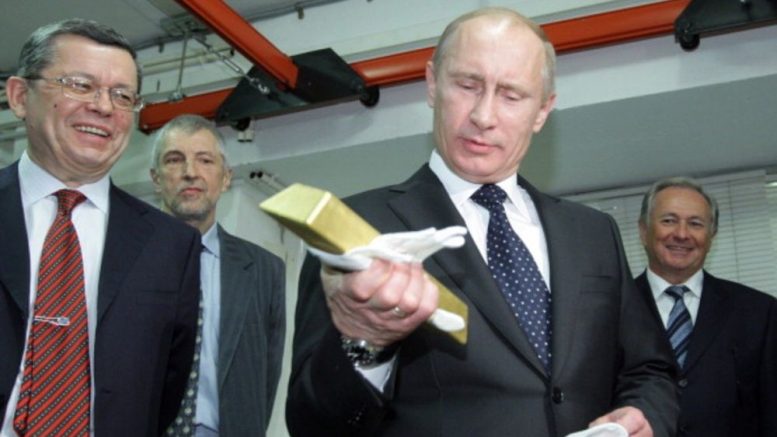With the gold market’s supply and demand numbers coming in for the first two to three months of 2019, one of the features of this year that’s coming into focus is the strong buying of gold by central banks around the world.
And yes, there is a distinct geopolitical element to it all, as these central bank buyers are predominantly from countries that stand in direct economic or political opposition to the U.S., and so are keen to move away from the U.S. dollar as a foreign reserve currency.
With central bank gold-reserve statistics for February 2019 now published, the World Gold Council (WGC) notes that central banks bought a net 51 tonnes (1.64 million oz.) in February — or the biggest monthly increase since October 2018 — when central banks reported an increase in global gold reserves of 105 tonnes. The WGC underscores that gross monthly sales in February were “virtually non-existent,” with central banks selling just 0.2 tonnes (64,000 oz.) during the month.
Furthermore, central banks’ gold holdings have grown 90 tonnes (2.9 million oz.) in the first two months of 2019, compared with 56 tonnes (1.8 million oz.) in the same period in 2018. This is the highest level of growth since 2008, and WGC analyst Krishan Gopaul writes that “this shows that collectively, central banks — mostly from the emerging markets — continue to accumulate gold at a healthy pace.”
He goes on to quote a passage from WGC’s “Gold Demand Trends Full year and Q4 2018” publication from Jan. 31: “Heightened geopolitical and economic uncertainty throughout the year increasingly drove central banks to diversify their reserves and re-focus their attention on the principal objective of investing in safe and liquid assets.
“Despite a decade passing since the global financial crisis, times seem no less certain. Central banks reacted to rising macroeconomic and geopolitical pressures by bolstering their gold reserves. These actions are consistent with a recent survey commissioned by the World Gold Council: 76% of central banks view gold’s role as a safe haven asset as highly relevant, while 59% cited its effectiveness as a portfolio diversifier. And almost one-fifth of central banks signalled their intention to increase gold purchases over the next 12 months.”
Looking at which central banks have added the most gold to their reserves on a percent basis reveals that Russia and Turkey top the list, trailed by India, China and Mexico. With the exception of India, the top gold hoarders amongst the central banks are those with varying degrees of frayed relationships with the United States.
The list of official gold reserves on an absolute basis is still led by the perennial top five of the U.S. (8,134 tonnes), Germany (3,370 tonnes), the International Monetary Fund (2,814 tonnes), Italy (2,452 tonnes) and France (2,436 tonnes).
But it’s in the next group of five where there is movement in the rankings, with Russia and China pulling away from the others: Russia (2,151 tonnes), China (1,885 tonnes), Switzerland (1,040 tonnes), Japan (765 tonnes) and the Netherlands (613 tonnes).
(Canada doesn’t even make the top-100 list, having long sold off all its gold reserves.)
The Moscow Times notes that Russia’s foreign exchange and gold reserves were at US$488 billion as of April 1 — the highest since March 2014 — and are “now at the level they had reached before the sanctions regime started, following Russia’s annexation of Crimea in 2014.”
In September 2018, along with front-loading the key interest rate 25 basis points to 7.5%, Russia’s central bank halted purchases of foreign currency, as the ruble came under pressure from possible toughening sanctions.
BNE Intellinews notes that in 2018, the Russian central bank bought a record 274.3 tonnes gold, bringing its share of global international reserves to 19.1%, and accounting for 42% of all gold purchases by central banks last year. At the same time, the share of the U.S. dollar as a foreign reserve was cut from 43.7% to 20%.
Meanwhile, China’s central bank reports that it bought another 11.2 tonnes (360,000 oz.) of the metal in March. Over the past four months, it has purchased almost 43 tonnes gold, putting it on course to be the leading central bank buyer in 2019, as the country remains in a trade war with the U.S. and the European Union.




Be the first to comment on "Editorial: Central banks are major gold buyers in 2019"